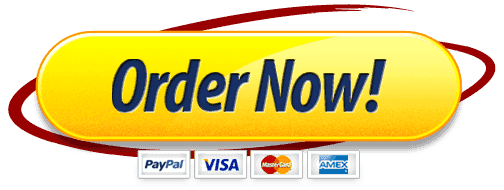- Premium Academic Help From Professionals
- +1 757 528 8682
- support@standardwriter.com
MBA 3008 Marketing Final Project Paper
- Home
- Uncategorized
- MBA 3008 Marketing Final Project Paper
MBA 3008 Marketing Final Project Paper
|
Order Number |
1124679397 |
|
Type of Project |
ESSAY |
|
Writer Level |
PHD VERIFIED |
|
Format |
APA |
|
Academic Sources |
10 |
|
Page Count |
3-12 PAGES |
Instructions/Descriptions
MBA 3008 Marketing Final Project Paper
Students will complete a final project that encompasses key learnings of the course. You will be choosing Apple, analyzing the brand’s marketing and environment, and planning strategic recommendations to enable the brand to pursue a marketing opportunity with a set of offer recommendations.
Tips for Research
Information may be available by contacting the organization, by searching each organization’s website, by using websites like www.finance.yahoo.com and www.sec.gov/EDGAR (Links to an external site.) to find information such as the organization’s annual reports, and by searching in the business and financial press.
Electronic databases such as ABInform, ReferenceUSA, IBISWorld, and Lexus/Nexus are useful sources of information. However, you should not rely solely on information provided by the organization. Your analysis should be supported by resources from a variety of sources.
Writing Tips
In your writing, be certain not to affiliate yourself with the firms – you are writing as a marketing strategist, not as a member of the organization. Refrain from using “I” and “we” in describing the organization’s strategy. Do not use the word “you” in a formal paper such as this.
Remember that in American English, organizations are referred to with the pronoun it, not they. Organize your work using headings and sub-headings (following APA format). We will cover several diagrams (generally called canvases) in the course and you are encouraged to use these diagrams as figures in your Final Project paper.
Your Approach
For your final report, imagine that your brand has hired you as a marketing strategy consultant (such as a team from McKinsey) to guide the brand in its future marketing strategy. Your report is your “deliverable” to the CEO and CMO of the company for which you work. Therefore, your report should be professional, well-documented, well-written, insightful, and well-supported with the proper analyses.
Use APA format to guide your use of headings and sub-headings and your use of in-text citations and references. The guide at https://owl.english.purdue.edu/owl/ is a good one. Note though that this is a BUSINESS report – not an academic paper. Therefore, in terms of title page, headers, and such – make choices more appropriate to business writing.
Assignment Instructions
Please include the following components in your Final Project:
Overview
Give a short account of the history of the brand’s organization to “set the stage”. Note: If your company is complex, you may select a narrow aspect to use as the focus of your project.
Review the brand’s business model. You may wish to include a completed business model canvas figure.
Provide an overview of the organization’s current product portfolio, pricing strategies (e.g., skimming, penetration), distribution strategies (e.g., direct or indirect; intensive, selective, exclusive; etc.), promotion strategies (e.g., promo mix).
Situation Analysis
Analyze the internal strengths and weaknesses of the organization and the opportunities and threats that it faces in its environment (SWOT analysis). You may use a table to express your SWOT analysis with some accompanying explanation.
As part of the OT portion of the analysis, include Porter’s Five Forces model to the industry in which the organization is based. Porter suggests that industry attractiveness is a function of the power of buyers (customers), suppliers, and competitors as well as threats from substitutes and potential new entrants into the market.
Discuss the relative power of each force for the organization. What substitutes exist for the customers of the organization? Are there barriers to entry to frighten away new competition? What are the sources of current competition (be sure to recognize all sources of competition for the organization’s product.
For instance, competition for a Friday evening sporting event includes anything and everything the target market might do instead)? What does this model tell you about the attractiveness and business opportunities in the industry?
When completing the OT portion of the SWOT, you will answering the question, “Are there any changes taking place in the macro environment (i.e., political, environmental, social/ cultural, technological, legal environments) that might have an impact, either positive or negative, upon the industry in which the organization is based? If so, what are these changes, and how will they affect the industry?”
How dynamic is the industry in which the organization is based? Is there any evidence that innovation is reshaping competition or has done so in the recent past?
In what stage of its lifecycle is the industry in which the organization is based? What are the implications of this for the intensity of competition both now and in the future?
YOU MAY USE TABLES AND FIGURES TO SHARE CRITICAL INFORMATION MORE EFFICIENTLY IF YOU WISH.
Market Opportunity Analysis
Consider what general market opportunities exist for the company using the Market Opportunity Matrix or the Growth Strategy Matrix. Pick one quadrant from either matrix and explain your idea for the brand’s new opportunity briefly (or if the company is already using this opportunity, describe it).
For the opportunity being considered, what strategic quadrant from the Strategic Quadrants Framework will be most relevant for guiding the marketing strategy decisions you will make? Explain the quadrant and the implications for the company.
Estimate the market size for the opportunity you selected using the TAM method: Total Available Market, Total Addressable Market, Total Achievable Market. You will need to identify the sources of information you used in your estimates. Explain why you used the information you used. Based on your estimates, how attractive is the market for this opportunity?
Estimate the market attractiveness using “market scoping”. You should already have this information as it is based on the OT portion of the SWOT. Here you are referring back to the OTs from the Unit 2 assignment to support your assessment of opportunity attractiveness from the perspective of market scoping.
SEGMENTATION AND TARGETING AND BUYER BEHAVIOR
Approximate the segmentation procedure to select a viable target audience for the opportunity you recommended in the Market Opportunity Analysis. You will explain the variables you would use in a cluster analysis to segment the market into distinctive and discriminant segments.
What type of targeting approach do you recommend the brand use?
Complete the targeting procedure. Include a buyer persona for the primary target market you selected. You are encouraged to utilize a buyer persona canvas to present your buyer persona in a cohesive manner. You may wish to use the templates for buyer personas offered at Canva.com or Xtensio.com.
Positioning
Conduct the positioning procedure for your brand. Note that most (perhaps all?) of your companies will likely already have a position in the minds of buyers in the market. If it does, you will still conduct the positioning procedure and you will be able to identify whether the position is the best one and if so, how it can strengthen the position.
If the position is not the best, then the brand should reposition and your procedure will reveal what the new position should be. If your company is new enough not to have a position, your positioning procedure will reveal the position that should be pursued. In your assignment please include the following:
If your company has a position, explain what it is. Note whether it is an emergent position or a strategic position.
Identify the value drivers that motivate behavior among your target market. I include 6 in my video example. Choose the most important ones – 5ish is good. If you have too many, it will hinder your work. The goal is to choose those that are truly the most important to your target market when making a buying decision.
Back up your choices with references if you can. Note that typically you’d gather this information from a focus group or survey. Since you won’t take that step, try to find references that suggest the most important value drivers.
Identify each of the values as a hygiene value or a motivator value.
PLOT THE RELATIVE IMPORTANCE OF THE VALUE DRIVERS.
Estimate the performance of your brand on each of the value drivers. Do the same for your top competitor. Again, in reality, you’d gather these scores from surveys (which would use questions like “Thinking about brand X, how would you rate its performance in the area of ValueDriver1 on a scale of 1-10?”). You’ll be making guesses. To the extent that you can, back up your guestimates with references.
Plot the scores for your brand and the competing brand (like I do in the video).
Overlay the first plot and the second plot. Discuss what the combined plot means in terms of what matters to buyers and where your brand has strengths or weaknesses relative to the competitor. What does the analysis suggest should be used in a positioning strategy for your brand?
What should be the “flag” or “grand position”? You may wish to include a list of competitors with their flags.
State your positioning statement using the positioning statement template to guide you.
Design to Value an Offer
Now that you have your recommended strategic opportunity, the target market, and the desired position, make marketing mix recommendations that would optimize perceived value in the minds of the target market and allow the brand to pursue the chosen strategic opportunity.
Analyze the consequences the target audience would experience for your offer versus that of one competitor.
Use the analyses to design the best value offer to bring to market. Do this for each P in the marketing mix. Be sure to relate your offer recommendations to the specific strategies and tactics discussed in the course with regard to each P.
PRODUCT
Price
Place
Promotion
People
Process
Presence
Marketing Performance
Explain what marketing metrics the brand should measure to evaluate its marketing performance and guide future decisions.
Conclusion
Write a succinct conclusion that summarizes the main points of your Final Project.



